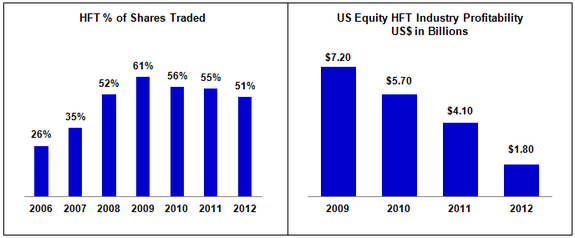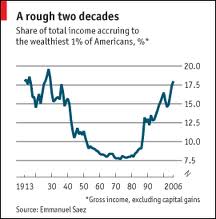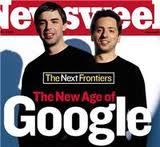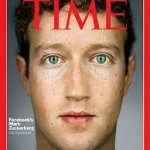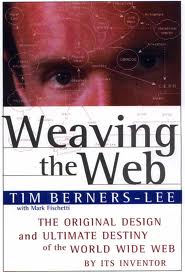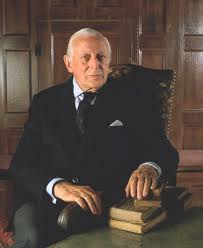Climate Change and the Death of Capitalism
Thursday, November 6th, 2014This Changes Everything; Capitalism vs the Climate, Naomi Klein, 2014
Naomi Klein in Vancouver BC. Photo taken by Jeff Chant 
This was supposed to be a book to give hope to those that want to transition from greenhouse emitting fossil fuel consuming that will make the Earth uninhabitable to a world of renewable and sustainable energy. Klein starts by discussing the many studies that show, not only is such a transition possible, but that it can be accomplished with existing technologies and can happen very quickly, well within the time frames necessary to avoid catastrophic climate change. Great, lets get going. In fact Denmark and Germany have transformed large parts of their energy sources to wind and solar more quickly then predicted, so quickly that existing German coal burning power plants are exporting their power to other countries. Unfortunately, the reader starts to feel like cartoon character Charlie Brown. Every time he gets ready to kick the football, Luci (Klein) yanks the ball away and the reader falls flat on his back.

Klein start with Genesis 1:18 written about 500 B.C.
God blessed them and said to them, “Be fruitful and increase in number; fill the earth and subdue it. Rule over the fish in the sea and the birds in the sky and over every living creature that moves on the ground.
The entire Judea-Christian culture is based on the fundamental notion that the Earth and its resources were created especially for man and man is to rule over them and use them however he wishes without limit. Klein contrasts this to the typical indigenous native view that the Earth provides for all living things but man with his intelligence has a particular responsibility to care for the Earth and all living things in it. Guess which view dominates.
She then gives us a brief history of industrialization which started its unstoppable acceleration with James Watt’s invention of the steam engine in the 18th Century. Our burning of fossil fuels has been accelerating ever since. Most of the carbon in the atmosphere is the responsibility of the oldest large economies.
Klein returns to one of her favorite topics; neoliberalism (see The Shock Doctrine)
Indeed, the three pillars of the neoliberal age – privatization of the public sphere, deregulation of the corporate sector, and the lowering of income and corporate taxes, paid for with cuts to public spending – are each incompatible with many of the actions we must take to bring our emissions to safe levels.
We measure the success of our economies by the growth rate of the national GDP. A recent long term economic study by French economist Thomas Piketty shows that low GDP growth rates and low population growth has been the typical state of large economies from 1700 until 1914 (WWI) and he expects that in the 21st Century we will return to those stable states baring another major catastrophe like global climate change. But today’s capitalism puts enormous pressure on executives to grow grow grow. No wonder they will go to extreme means and measures to achieve this unnatural growth. This form of unsustainable expansive capitalism must change or the Earth will be uninhabitable.
The deregulating Clinton administration and his climate change alarmist VP Al Gore pioneered worldwide trade agreements starting with NAFTA and creating the WTO that have brought into existence a global economy based on industrial agriculture, the search for lowest labor costs, and massive increase in the need to transport the resulting products and food; in other words an explosive increase in fossil fuel consumption. These same trade agreements have been used effectively to block locally generated alternate energy projects. Clinton also introduced the cap and trade carbon system late in the Kyoto talks and Gore pushed the idea through. There is little evidence that cap and trade has done anything to reduce emissions but it has created a world wide derivatives market (think sub prime mortgages) where a company in India is paid a large sum to produce ozone destroying refrigerants banned in most countries. Figure that one out. Carbon credits and derivatives are an open invitation to game the system.
Where is the environmental movement? Big green sold out to the energy companies who use them in PR campaigns to make them appear to support alternate energy sources – but we need a “transition period”. Many of the biggest environmental groups receive most of their funding, some secretly, from big energy. The biggest, The Nature Conservatory, was given 2303 acres in southeast Texas by Mobil in 1995 to provide a preserve for the endangered Attwater prairie chicken. In 1999 the Conservatory put a gas well on the property. This was discovered and reported by the LA Times in 2002 forcing a promise not to drill again but the Conservatory put in an oil well in 2007. Big green – big carbon producer. By the way, the prairie chickens are all gone from the preserve. Guess they don’t like oil drilling. The Sierra Club (setting a few personal scandals aside), Greenpeace, and 350.org are exceptions to the sellout.
Attwater Prairie Chicken estimated 60 remain in the wild 
What do you do when your fortune and livelihood is dependent on producing a deadly product? Or you are a politician dependent on those producing that deadly product? You engage in magical thinking. Step 1 denial. The midterm election that swept Republicans into control of congress will assure that all environmental and energy committee positions will be filled with climate change deniers. Climate Denier James Inhofe new Senate Environment Chairman The alternative is that you are out of a job. Step 2 green billionaires will buy a solution. Richard Branson promised to use $3 Billion in profits from Virgin to develop alternate fuel sources. He also offered a $25 million prize for the inventor of a carbon sequestration system. Virgin flies more routes than ever, the $3 Billion never materialized and the prize has not been awarded. Brilliant PR campaign though. Gates, Pickens are others who have made some alternate energy noises, remain deeply invested in fossil fuel energy. Step 3 Bio engineer a solution (see Climate Engineering) This is the one where you put a sulphite shield in the stratosphere to simulate the cooling effects of a volcanic eruption. The effects on the climate worldwide are unknowable because you can’t experiment to try it. What is really scary is that Klein admits that if she was desperate enough she might be willing to try it.
Big energy needs to grow and to do so they need to resort to more extreme methods and to extract closer to those more able to fight them, for example attempts to frack natural gas in Ithaca, New York, home to Cornell University – Big mistake. Cornell is the originator of some of the best studies showing how dirty fracking is in the release of methane gas, pollution of water, and earthquakes.
Coal mining in Montana with plans to ship the coal to China ran into the Indian – Cowboy collation with local ranchers joining with native tribes to prevent the hauling of coal over beautiful but dangerous Highway 12, prevented the building of a special rail line and, so far the building of a big port somewhere in the Northwest. Big energy better stay away from the Northwest. Lummi Totem Kwel Hoy (We Draw the Line) traveled 1300 km to the Montana coal site. Kwel Hoy has been planted near Vancouver looking out at the Pacific.
Kwel Hoy at proposed coal port in Bellingham  Kwel Hoy visits Seattle
Kwel Hoy visits Seattle 
Klein is Canadian with a special interest and concern with the Alberta tar sands. She is on the board of directors of 350.org. Her big hopes here are that the pipelines needed to move the oil can be stopped (choke points like the Montana coal routes). Central to these efforts are native treaty rights and a series of recent court decisions upholding the native treaty rights. It seems, at least in Canada, that the native population never gave up their rights to much of Canada beyond the reservations but agreed to share the land. How to you share something that somebody else destroyed. The liabilities for the Canadian government are in the Trillions. But when natives asked the person responsible for Canada’s AAA credit rating how this rating can be maintained in face of this liability, the individual responded basically you and what army are going to enforce those reparations? Can the native treaties be used to stop the tar sands pipelines or coal routes? We don’t know.
Alberta Tar Sands 
Klein talks about the growing divestment movement and hopes it is joined by an equally robust reinvestment in alternative energy sources. What is clear is that most of the stock value of energy companies relies on energy reserves and that extraction and use of those reserves will make the Earth uninhabitable. You can deny the science maybe but Mother Nature is non negotiable. There is now a group of divestment investors whose primary rationale is that values dependent on unusable reserves are not real and energy stock prices must crash at some point. Energy companies won’t continue to be profitable and the window of opportunity is short to use energy profits for reinvestment in alternate energy.
So lets review our situation. The dominant world culture believes that the Earth was created for us to exploit. Capitalism must grow or perish. Globalism requires exploitation of the cheapest resources wherever they are found, prevents regulation of trade, and greatly expands energy needs. Big agriculture requires massive chemical inputs and massive transport and is unsustainable. The climate gets more extreme and unpredictable and climate disasters are vastly more expensive now. Worldwide, politicians are largely neoliberal favoring austerity measures to further their agenda and dependent on corporations for their survival. Courts are largely manned by pro corporate judges. The handful of billionaires that own half the world’s wealth are insensitive to other’s suffering to the point of allowing entire nations to be drowned in the rising seas believing their wealth will protect them from anything. Klein says you can buy an apartment in NYC where you can live underwater like in a submarine if necessary. I wonder what you eat in your submarine. Most of the world’s population won’t be able to grow food or have access to clean water.
Klein is clear that a broad based worldwide grass roots populist movement is the only thing that has a chance to change things. We know the alternative is possible. We just don’t know how to force the changes needed to get there.
Put another way, only mass social movements can save us now. Because we know where the current system, left unchecked, is headed. We also know, I would add, how that system will deal with the reality of serial climate-related disasters: with profiteering and escalating barbarism to segregate the losers from the winners. To arrive at that dystopia, all we need to do is keep barreling down the road we are on. The only remaining variable is whether some countervailing power will emerge to block the road, and simultaneously clear some alternate pathways to destinations that are safer. If that happens, well, it changes everything.
Hence the title of the book. Hope you feel better.


